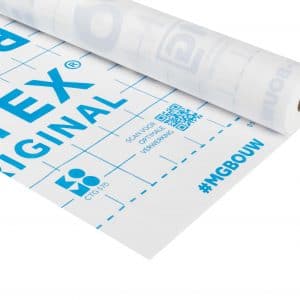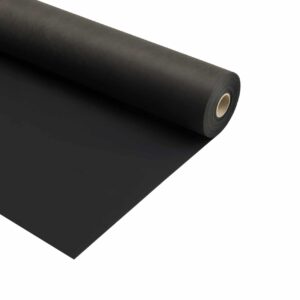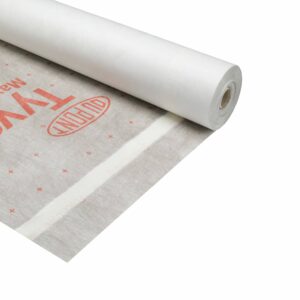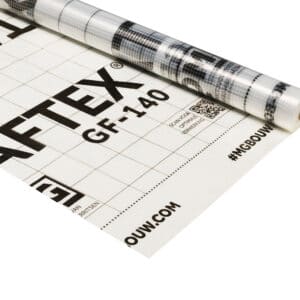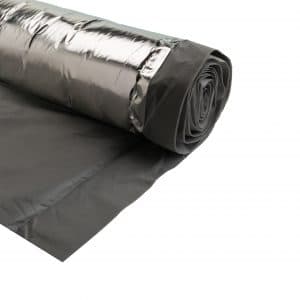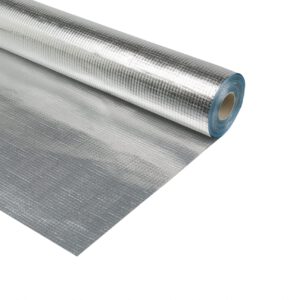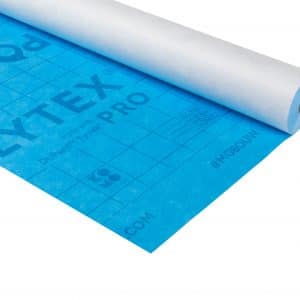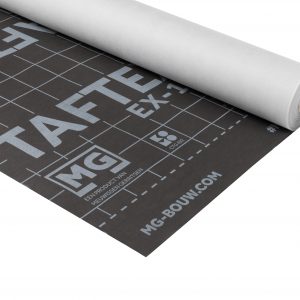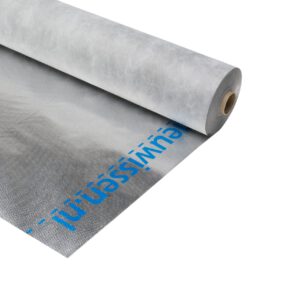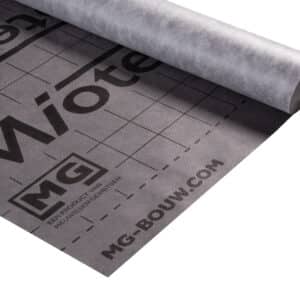What is a vapor permeable membrane?
A vapor-permeable membrane is a membrane that allows created vapor to pass through the membrane. Vapor is water or moisture in gaseous form and, unlike a drop of water, is usually not visible to the naked eye.
Vapor-permeable films are used on the cold side of the structure. Usually behind the cladding or under the roof tiles. Important in determining the right film is to look closely at the type of construction. Is it a roof or a facade and will the film be attached directly to the hard surface or to soft insulation? In addition, the final finish is also important. For example, other films must be applied when the finish consists of poorly sealing tiles or a zinc roof that faces high temperatures when the sun is on it.
Spunbond/perforated films
Spider web films or perforated films are mostly vapor-open. Spunbond film is a broad term because it indicates that the strong layer of the film is made of a nonwoven or spunbond layer. A spunbond film usually consists of several layers, one of which is a functional waterproof layer. Spider web films are thus completely waterproof but at the same time allow vapor to pass through. Polytex® and Miotex® films are examples of spunbond films in our range.
A perforated film is one where tiny holes are perforated across the surface. These holes are so small that a drop of water, when the foil is applied vertically in a facade, cannot get through. But at the same time, vapor can find its way out of the structure through the microperforation. There are many suppliers in the market who claim to sell perforated films but there are many distinctions between the different producers. The size and quantity of the holes along with the depth at which they are perforated determines the effectiveness of the film.
An overview of all our vapour permeable films
Polytex® is a water-repellent breathable membrane, which consists of two layers of polypropylene with a functional micro-porous membrane in between.
Polytex® Fassade FR is a breathable and watertight membrane that can be used to protect the insulation layer and construction behind partly open exterior facades.
Miofol® 210AG is a micro-perforated insulating and reinforced technical construction membrane.
Tyvek® FireCurb Housewrap is a water-repellent and permeable fire-retarding facade membrane, which features one layer of 100 % HDPE.
Tyvek® UV Facade is a watertight and extremely breathable 2-layer non-woven membrane, which is made of HDPE and polypropylene, and is based on Tyvek® Dupont™ technology.
TAFTEX® EX-130 is a water-repellent and breathable membrane, which consists of two layers of polypropylene with a functional micro-porous membrane in between.
Polytex® 145 AG is a water-repellent and breathable non-woven membrane that features an aluminium top layer.
Miotex® is a watertight breathable membrane, which consists of two layers of polypropylene with a functional micro-porous membrane in between.
Miotex® Fassade is a watertight breathable membrane, which consists of two layers of polypropylene with a functional micro-porous membrane in between.
Perfo® is a micro-perforated and transparent LPDE membrane, which has been reinforced using polypropylene webbing.
Where is vapor permeable film used?
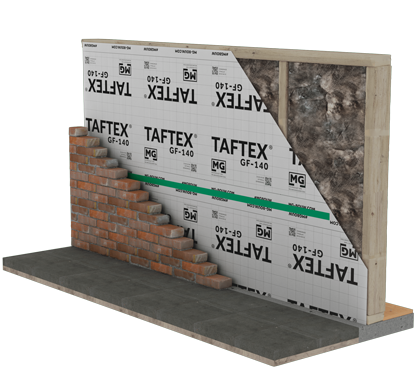
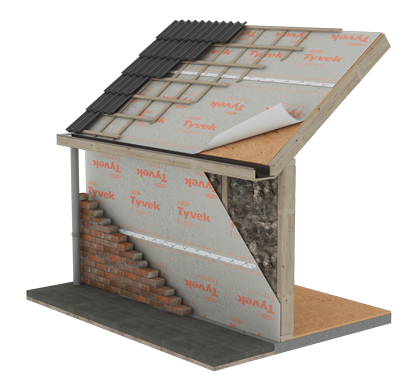

Do I need a vapor retarder as well as a vapor-opening membrane?
Structures can contain high levels of moisture. This can occur during construction because the wood or insulation material has been outside and got wet in the process but in most cases it is due to moisture from within the building. The warm air inside a building can hold more moisture than cold air outside. Because the concentration of moisture inside in the form of vapor is higher than outside, vapor pressure is created. Or in other words, inside the building the vapor pressure is higher than outside. Due to the difference in vapor pressure, the vapor from inside is pushed out through the roof or wall structure. Therefore, it is essential to apply a good vapor retarder film, such as the Miofol® 125S or a vapor-tight film such as the Miofol® 125AV on the warm side of the insulation.
But if the vapor retarder on vapor-tight film is not applied properly or is damaged then the vapor can still get into the insulation and structure. If the insulation or structure has become wet then it drastically affects the performance of the insulation. It also creates the possibility of mold or wood rot.
So why is a vapor-permeable membrane essential?
To prevent moisture in the structure or insulation, it is crucial to be able to drain the moisture. For that, the vapor-open layer is on the cold side of the structure. Moisture can pass through the vapour permeable membrane and is removed by ventilation behind the cladding or under the roof tiles. A properly processed vapor retarder or vapor-tight film is there to prevent as much moisture as possible from entering the building, while a vapor-open film ensures that the moisture is discharged to the outside. This ensures that the moisture content, function, but above all the life span of the structure and insulation is maintained.
A Polytex® spunbond film as a vapor-opening and waterproof film on the cold side in combination with a Miofol® vapor retardant or vapor-tight film on the inside guarantee a functional and durable construction.
Why a spunbond or perforated film from Meuwissen Gerritsen?
Meuwissen Gerritsen is the first producer to develop both films. We have developed the properties needed for a durable construction over the past decades into the products they are today. In addition, our products are extensively inspected in order to be able to offer a guaranteed quality with KOMO certificate according to the ago BRL. The products have proven themselves multiple times in extreme climatic conditions so we can guarantee quality.
When is it better not to use spider web film?
In fact, as long as you process the film on the cold side and know correctly which type of Polytex®, TAFTEX® or Miofol® film you need, you can always process a breathable film according to the processing instructions. However, if a structure is not insulated and a vapour permeable foil is applied, there is a good chance that condensation will occur on the underside (warm side of the structure). A foil, no matter how vapor-permeable, always forms a barrier to moisture exiting compared to a structure without a foil. Therefore, it is recommended at all times that a vapor-permeable membrane, spunbond or perforated membrane be installed in conjunction with insulation.
Where should you not use perforated films?
A perforated film such as the Miofol® films are particularly vapor-permeable and water-repellent but not completely watertight. The degree of waterproofing is indicated by W1 or W2. Spider web films and the Tyvek® films are so-called W1 films and therefore completely waterproof and suitable for roof and facade applications. A perforated film is water-repellent (W2) and not completely waterproof. On the roof, the impact of rain is greater than in vertical processing in a facade. For this reason, we recommend that perforated films be used primarily in facades and not on roof structures.







